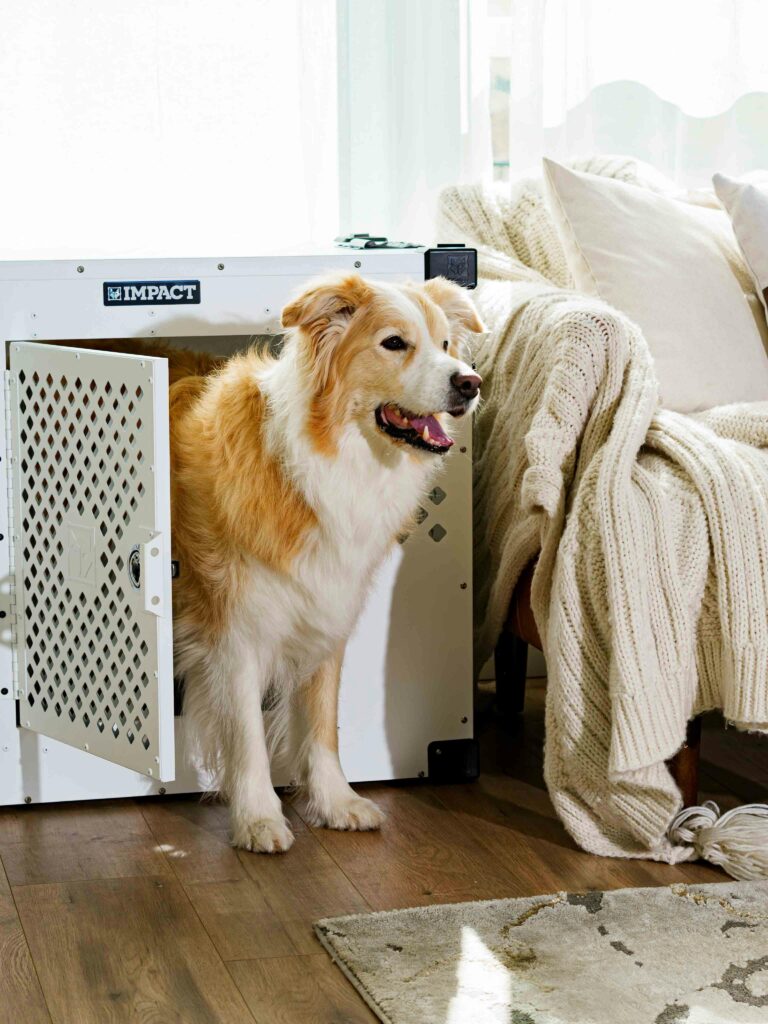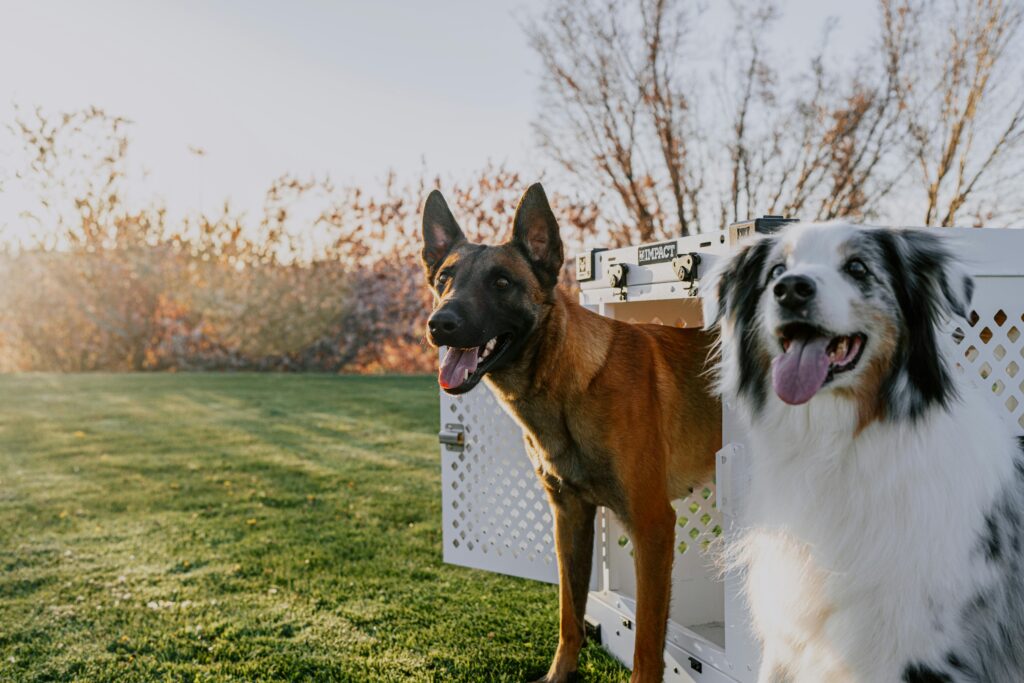Crate training often gets a bad reputation. Some people think it is cruel or comparable to “locking up” a dog. In reality, when introduced properly, the crate becomes a safe haven that supports training, prevents destructive behavior, and gives dogs the calm space they need to thrive.
As a professional trainer here in Erie, I’ve helped countless families use crate training to transform their dog’s behavior at home. Let’s break down the myths and show why the crate is an essential piece of your obedience toolkit.

Why Crates Benefit Dogs
Dogs are naturally den animals. In the wild, they seek out small, enclosed spaces for safety and rest. A properly sized crate mimics this instinct.
Key benefits of crate training:
- Provides a safe space for naps and downtime
- Prevents chewing, accidents, or mischief when unsupervised
- Aids in housebreaking by teaching bladder control
- Reduces anxiety during travel or vet visits
- Creates predictability, which helps dogs relax
Instead of viewing the crate as punishment, think of it as your dog’s personal bedroom.
Crate Training Supports Obedience
A crate is not just about convenience. It directly reinforces obedience and structure at home.
How crates help obedience:
- Teaches self-control, since your dog learns to settle on command
- Creates clear boundaries, preventing resource guarding or unsafe roaming
- Supports impulse control by rewarding calm entries and exits
- Prevents rehearsing bad habits like counter surfing or barking at windows
If your dog is learning basic obedience, pairing crate time with commands like “place” or “down” gives them built-in rest and consistency. Our Basic Obedience Training program often uses this approach to speed up results for families.
Common Myths About Crate Training
Myth 1: Crates are cruel.
Truth: A properly introduced crate becomes a safe retreat, not a punishment. Most dogs choose to rest in their crate voluntarily once they are comfortable.
Myth 2: My dog will feel trapped.
Truth: Dogs feel more secure in small, den-like spaces. A crate reduces overstimulation and gives them control over their environment.
Myth 3: Crate training takes too long.
Truth: With patience, positive reinforcement, and consistency, most dogs adjust within a week or two.
How to Introduce the Crate Positively
Introducing the crate the right way ensures it becomes a space your dog loves.
Steps to success:
- Start with short, positive sessions inside the crate.
- Use treats, toys, or meals to create positive associations.
- Keep the door open at first so your dog can explore freely.
- Gradually extend the time inside with the door closed.
- Never use the crate for punishment after unwanted behavior.
Your tone and consistency matter most. Calm, neutral crate introductions lead to faster acceptance.
Crates for Puppies vs. Adult Dogs
Puppies benefit from crates during housebreaking, while adults gain structure and a safe resting spot.
- Puppies: Use the crate to set potty schedules and prevent accidents.
- Adults: Use the crate to manage downtime, prevent destructive habits, and create predictable routines.
Both puppies and adults find comfort in having their own designated spot.
Everyday Situations Where Crates Help
- House Training: Dogs learn to hold their bladder until let out.
- Travel: Crates make car rides safer and reduce motion anxiety.
- Busy Households: During holidays or events, the crate gives dogs a calm retreat.
- Training Sessions: Use crate breaks between drills to prevent overstimulation.
Our blog on helping a fearful or anxious dog build confidence shows how structure and safe spaces can dramatically improve a dog’s emotional health, and the crate often plays a central role.
Trusted Resource
For step-by-step details on crate training puppies, the American Kennel Club offers a practical guide on crate training tips for success. It is a great resource for both new and experienced owners.
Final Thoughts
Crate training is not about restriction, it is about freedom. A dog that feels safe in their crate can confidently explore the world, knowing they always have a secure place to rest.
If crate training feels overwhelming or your dog struggles with anxiety, Off Leash K9 Training Erie can help. We specialize in tailored obedience programs that incorporate crate training into a bigger picture of calm, reliable behavior. Start by reaching out through our contact page.


